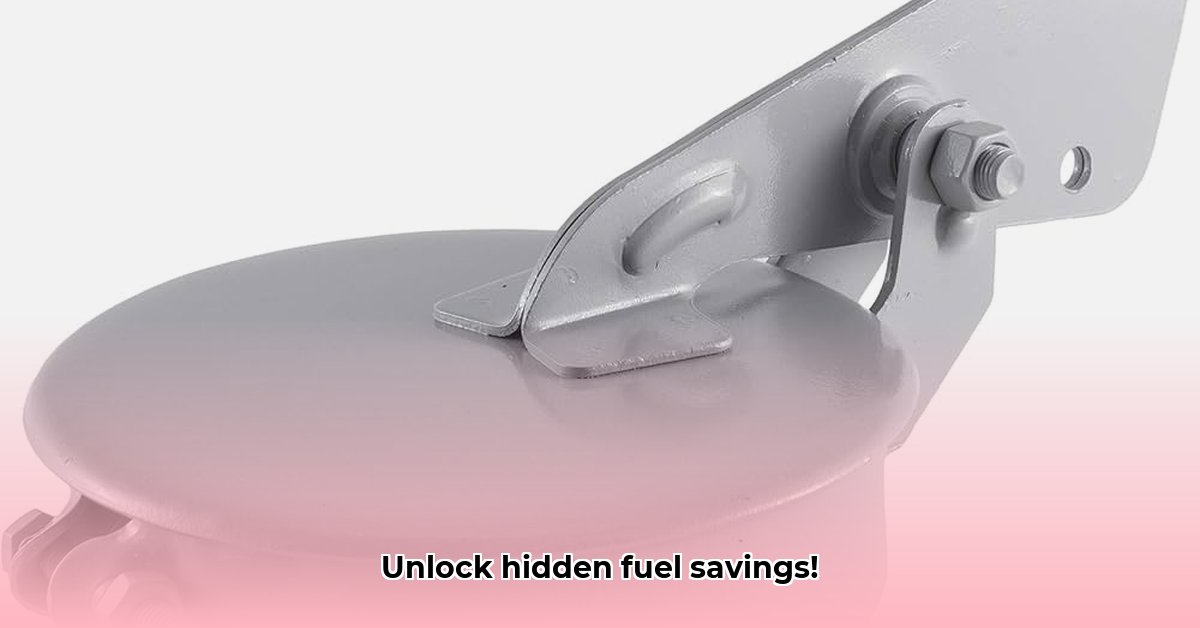
Understanding Your Tractor Exhaust Flap
The tractor exhaust flap, often overlooked, significantly impacts fuel efficiency and engine performance. This unassuming component acts as a gatekeeper for exhaust gases, regulating their flow. When the engine works hard, the flap opens fully, allowing free exhaust flow. Under lighter loads or idling, the flap partially or fully closes. This pressure management is key to maximizing engine efficiency. (Think of it like a volume control for your tractor's exhaust.) For more on tractor hydraulic systems, see this helpful resource.
How Tractor Exhaust Flaps Work: The Science Behind the Savings
The exhaust flap's function is based on the principle of back pressure. When the flap is open, exhaust gases escape easily. However, a partially or fully closed flap restricts this flow, increasing pressure within the engine cylinders. This increased pressure improves combustion and fuel efficiency. (It's similar to blowing out a candle – harder with a restricted airflow). The improved combustion translates directly to better fuel mileage and enhanced engine performance. The controlled restriction creates optimal pressure for better torque, especially at lower engine speeds. (Think of it as squeezing a balloon; increased pressure leads to more power).
Benefits of a Healthy Tractor Exhaust Flap: What You Gain
A properly functioning exhaust flap provides several key benefits:
- Improved Fuel Economy: Optimized fuel combustion leads to noticeable fuel savings, reducing operational costs. Farmers can see significant savings over time.
- Enhanced Torque: Better low-end power means greater pulling capabilities, especially beneficial in challenging terrains or with heavy loads.
- Reduced Emissions: Better fuel combustion minimizes harmful emissions, contributing to more environmentally friendly farming practices and reduced environmental impact.
Troubleshooting Your Tractor Exhaust Flap: When Things Go Wrong
A malfunctioning exhaust flap can decrease performance and increase fuel consumption. Here’s how to identify problems:
- Visual Inspection: Check for cracks, bends, or excessive rust on the flap. Visible damage may require replacement.
- Movement Check: Ensure the flap moves freely. Stiffness or jamming may necessitate lubrication or replacement.
- Actuator Assessment: A malfunctioning actuator (the part controlling flap movement) prevents proper operation; professional diagnosis may be required.
- Sound Check: Unusual noises (rattling, knocking) from the exhaust system could indicate a faulty flap or related component.
If unsure, consult a qualified mechanic. Improper repairs can worsen problems.
Maintaining Your Tractor Exhaust Flap: Preventative Care
Regular maintenance is crucial for preventing issues:
- Regular Inspections: Include flap inspection in routine tractor maintenance. Early detection prevents major problems.
- Cleanliness: Keep the exhaust system free from debris, preventing interference with flap operation.
- Lubrication (If Applicable): Consult your tractor's manual for lubrication recommendations; it can ensure smooth flap movement.
The Many Types of Tractor Exhaust Flaps: Design Variations
Tractor exhaust flaps vary in design based on the tractor's make, model, and engine type. Consult your owner's manual for specifics.
Tractor Exhaust Flaps and Sustainable Agriculture: A Greener Future
Efficient exhaust flaps contribute to sustainable agriculture by optimizing fuel usage and minimizing emissions, reducing your environmental footprint.
Should You Upgrade Your Tractor Exhaust Flap?
An upgrade's necessity depends on your tractor's age, usage, and performance. Decreased fuel efficiency or reduced engine performance warrants assessment – a repair or replacement might greatly improve performance.
Remember: Always consult your tractor's manual for model-specific information. For complex repairs, seek professional help. This guide provides a foundation; professional expertise ensures optimal operation and maintenance.